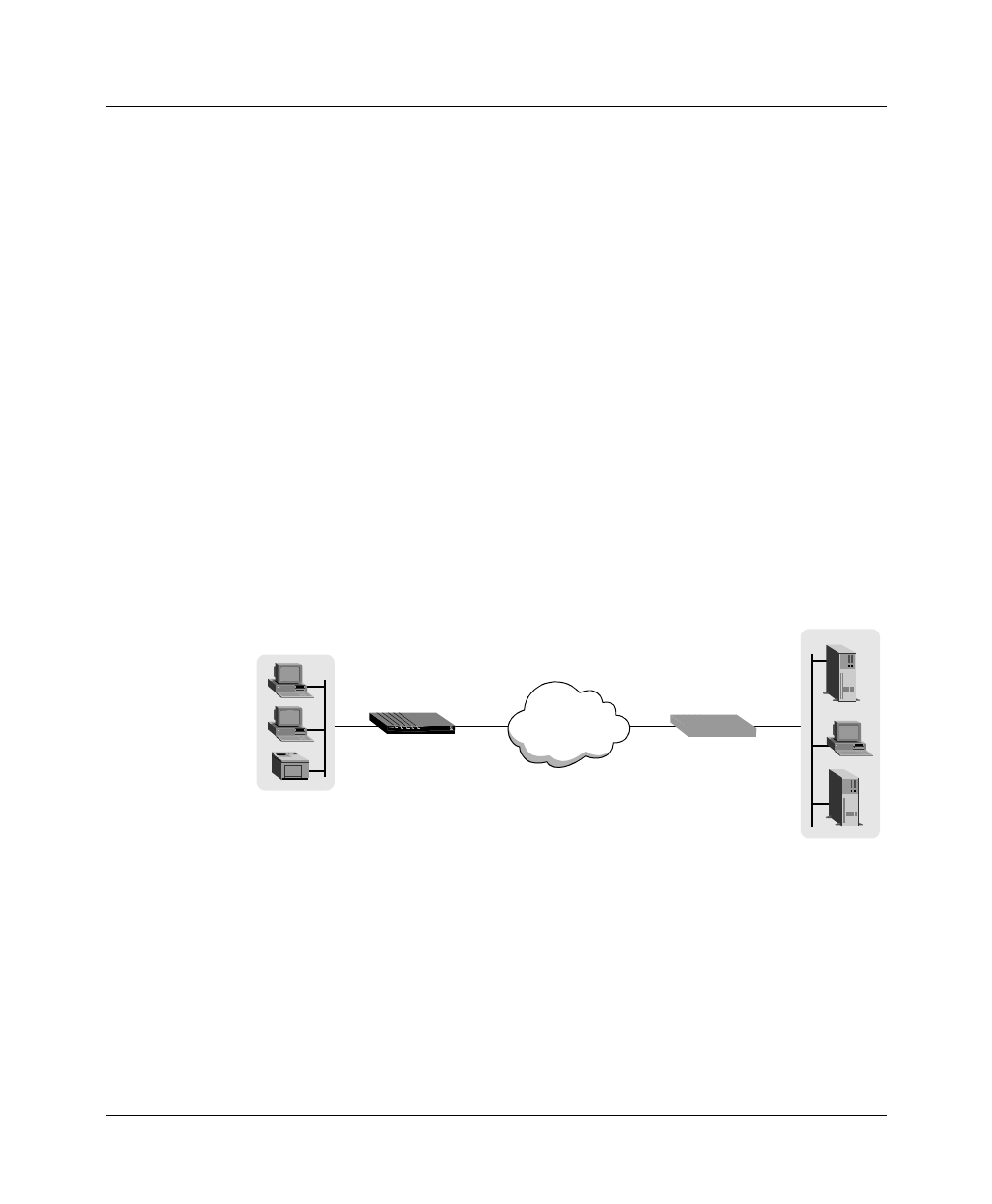User`s guide
Table Of Contents
- Ascend Customer Service
- How to use this guide
- What you should know
- Documentation conventions
- How to use the on-board software
- Manual set
- Configuring WAN Connections
- Configuring IP Routing
- Introduction to IP routing on the Pipeline
- Managing the routing table
- Parameters that affect the routing table
- Static and dynamic routes
- Configuring static routes
- Specifying default routes on a per-user basis
- Enabling the Pipeline to use dynamic routing
- Route preferences
- Viewing the routing table
- Fields in the routing table
- Removing down routes to a host
- Identifying Temporary routes in the routing table
- Configuring IP routing connections
- Ascend Tunnel Management Protocol (ATMP)
- IP Address Management
- Connecting to a local IP network
- BOOTP Relay
- DHCP services
- Dial-in user DNS server assignments
- Local DNS host address table
- Network Address Translation (NAT) for a LAN
- Configuring IPX Routing
- How the Pipeline performs IPX routing
- Adding the Pipeline to the local IPX network
- Working with the RIP and SAP tables
- Configuring IPX routing connections
- Configuring the Pipeline as a Bridge
- Defining Filters and Firewalls
- Setting Up Pipeline Security
- Pipeline System Administration
- Pipeline 75 Voice Features
- IDSL Implementations
- APP Server utility
- About the APP Server utility
- APP Server installation and setup
- Configuring the Pipeline to use the APP server
- Using App Server with Axent SecureNet
- Creating banner text for the password prompt
- Installing and using the UNIX APP Server
- Installing and using the APP Server utility for DO...
- Installing and using the APP Server utility for Wi...
- Installing APP Server on a Macintosh
- Troubleshooting
- Upgrading system software
- What you need to upgrade system software
- Displaying the software load name
- The upgrade procedure
- Untitled

Configuring the Pipeline as a Bridge
Configuring bridged connections
5-14 Preliminary January 30, 1998 Pipeline User’s Guide
Encaps options...
Send Auth=CHAP
Recv PW=*SECURE*
Send PW=*SECURE*
IPX options...
Handle IPX=Client
10
Close the Connection profile.
Dial Brdcast is enabled to allow service queries to bring up the connection.
When Handle IPX=Client, the Pipeline applies a data filter that discards RIP and
SAP periodic broadcasts at its WAN interface, but forwards RIP and SAP
queries. That way, local clients can locate a NetWare server across the WAN, but
routine broadcasts do not keep the connection up unnecessarily.
An example IPX server bridge (local servers)
In the following example, the local network supports a combination of NetWare
clients and servers, and the remote network only supports clients.
Figure 5-4. An example IPX server bridging connection
To configure the Pipeline in this example:
1
Open the System profile.
2
If the Pipeline does not already have a system name, assign one.
For example:
Name=SITEAGW
3
Close the System profile.
WAN










